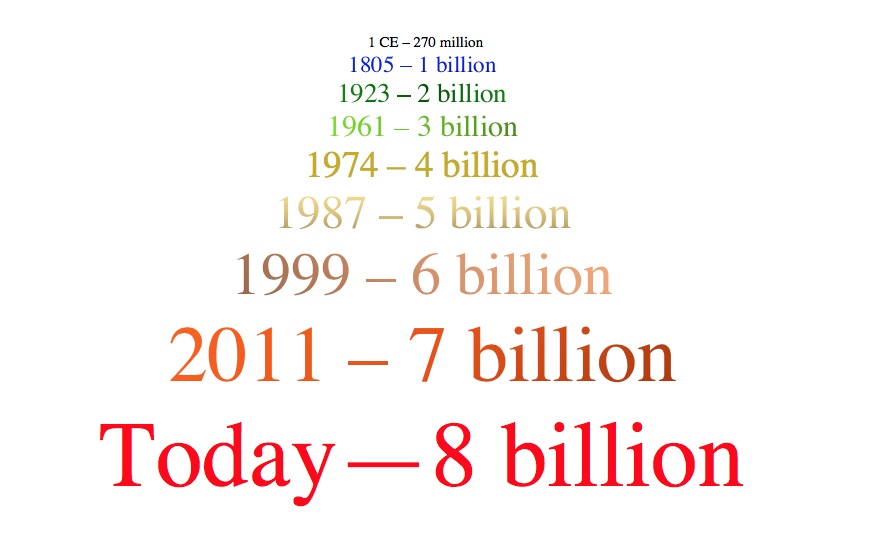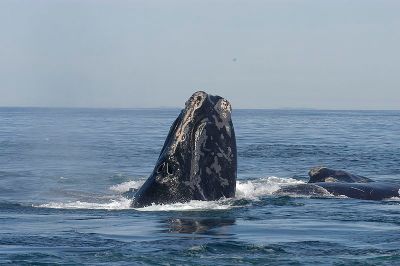Some Inconvenient Truths
In Observation of 15 November 2022

A couple years ago it was announced that not a single calf was born to the remaining 366 Northern Atlantic right whales, thereby putting them in jeopardy of almost certain extinction. Similarly, just the year before, the sole remaining male northern white rhino died, all but insuring the end of his subspecies as well. And then there’s the western monarch butterfly whose numbers have plunged 99 percent in just the past four decades.
These three will likely join the ranks of the “nevermore” along with scads of other species lost to extinction just within our generation. And this trend is quickening. In fact, we are currently losing species at a pace somewhere around 1,000 times the natural “background” extinction rate, all of which is projected to bring about the fates of upward of one million of Earth’s 8 million or so species by 2100. All this is happening because of climate change, pesticides, herbicides, oceanic acidification, our one percent annual usurpation of wild habitat, and plain old over-fishing and over-hunting. In other words: all because of us.

Make no mistake: this “Mass Extinction Event” is the greatest challenge we will ever face, and yet the primary driver behind it, as well as most of our woes — be it deforestation, aquifer depletions, desertification, desperate migrations, plastic waste, famine, malnutrition, coral reef die-off, intensifying hurricanes and droughts, historic wildfires, hypoxic dead zones, air and water pollution, thawing polar caps, homelessness, traffic gridlock, civil unrest, pandemics, war, genocide, et cetera, ad infinitum, ad nauseam — is a problem so divisive, so taboo it is rarely if ever uttered: human overpopulation and its seemingly inseparable cohort overconsumption.
How do we know there are too many people? Consider the recent World Wildlife Fund’s Living Planet Report 2022 showing wildlife numbers have plummeted 69 percent just since 1970, all while our human population has more than doubled. Might there be causality here? You bet.
Overpopulation deniers will argue that today’s 2.4 total fertility rate (TFR) is half what it was even as recently as 1950. True. Problem is we have three times as many people giving birth today, meaning we are adding to our numbers (by some 220,000 per day) faster than ever, putting us on pace to surpass 8 billion by the 15th of this month, and hopefully to peak at 10.4 billion sometime around 2080.
Now, all this wouldn’t be a problem if our current population didn’t already consume about 70 percent more resources than the Earth can sustainably provide (a phenomenon called “overshoot,” which first began around 1970). Exacerbating matters our per capita consumption is still on the rise, especially as the Developing World grows evermore industrialized and meat becomes an ever-larger portion of the global diet. As a result of this “double whammy” of rising population and consumption rates we can expect global food needs to increase 50 percent and energy needs to double by 2100, and all while arable land shrinks by 30 percent.
Given these bleak prospects, why is overpopulation such a forbidden topic? Why isn’t it ever covered by the “mainstream media,” those snarky cable networks, or even NPR and PBS? Why do campaign cycles come and go with neither party daring to mention it? And, most shockingly, why do environmental and humanitarian organizations purposely avoid the subject entirely, even though their otherwise noble efforts are utterly futile in the presence of unfettered growth?
One reason, of course, has to do with the world’s sundry religions and their divine mandates of yore to “go forth and multiply,” harkening back to a time before dwindling resources were a concern. Another reason is past population control efforts’ spurious association with eugenics and cultural suppression; a perhaps relevant assertion generations ago but now just an anachronistic holdover that falsely maligns all present-day population campaigns as racist.
But there is even a third reason the subject is strictly taboo; a huge reason: “It’s the economy, stupid.” That is, it has somehow become sacrilegious to discuss degrowth largely because our antiquated economic system — invented back when the world was flat and limitless — is perceived to be reliant upon unabated expansion, even as common sense tells us indefinite growth on a finite planet is not only implausible but also suicidal in the most extreme sense of the word.
Recently, in an effort to publicize the threats we face, an unprecedented number of scientists (15,364) from an unprecedented number of nations (184) lent both their signatures and reputations to a paper entitled, “World Scientists’ Warning to Humanity: A Second Notice” (BioScience, 1 December 2017). This was done as a desperate, clarion warning that we are quickly driving our lovely planet to hell in a handbasket unless we act immediately and decisively to reduce our consumption, curb greenhouse gas emissions, and, most culturally toxic, reverse our rampant growth.
So, what is Earth’s maximum sustainable carrying capacity? Albeit a hotly debated number subject to countless variables and opinions, it nonetheless pencils out to somewhere between 2 billion and 3 billion at today’s per capita consumption rates. But with us presently hurtling past 8 billion, how can we possibly hope to reverse this trend? Thankfully the math is actually quite simple: just as we quadrupled our population over the last century we can eventually whittle it back down to a sustainable number by lowering the global TFR by an average of one child per family. And we can accomplish this by making safe and affordable contraception available to all, raising women’s education levels, and by voluntarily delaying procreation.
For if our stated goals of protecting the environment and leaving a better society for our children are truly sincere it is incumbent for us then to summon the courage to, openly and unapologetically, call out the greatest threats to both — human overpopulation and overconsumption.
Robert P. Johnson is author of Thirteen Moons: A Year in the Wilderness and The Culling, and was a collaborator on World Scientists’ Warning to Humanity: A Second Notice.




You must be logged in to post a comment.